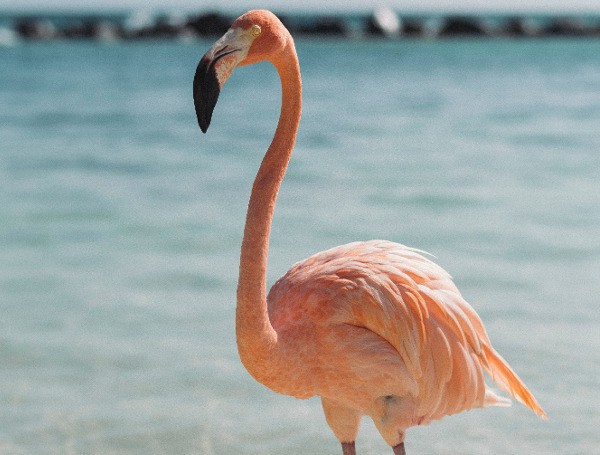Move over mockingbird. Here comes the flamingo. Rep. Jim Mooney, R-Islamorada, and Rep. Linda Chaney, R-St. Pete Beach filed a bill (HB 753) this week that would designate the American flamingo as a Florida state bird.
The designation would take the place of the mockingbird, which was approved in 1927, according to the bill.
Florida, the third-most populous state in the US, is known for its stunning beaches and diverse wildlife. While the state animal of Florida is the Florida Panther, it’s the state bird that captures the attention of bird enthusiasts and nature lovers.
The Northern mockingbird (Mimus Polyglottos) has been chosen as the official state bird of Florida. In this article, we’ll explore why the Northern Mockingbird was selected as the state bird, its physical characteristics, behavior, and its significance to the residents of Florida.
Read: Exploring The Diverse Wildlife Of Florida
Why is the Northern Mockingbird the State Bird?
The Northern mockingbird was chosen as the state bird of Florida due to its valuable contributions to the state’s ecosystem.
This little bird plays a crucial role in controlling the insect population by dining on insects that would otherwise be a nuisance to the residents.
Each bug the mockingbird consumes is one less bug bothering people on their patios and in their gardens. It serves as a natural pest control agent, making it a beloved bird among Floridians.
A Brief History
On April 23, 1927, the Northern mockingbird was officially designated as the state bird of Florida through Senate Concurrent Resolution No. 3. This resolution recognized the bird’s significance and contributions to the state’s environment. Since then, the Northern mockingbird has become an emblem of Florida’s unique wildlife.
Physical Characteristics
The Northern mockingbird is a medium-sized bird with a long tail and distinctive features. Both male and female mockingbirds have a gray chest and upper area, complemented by a light gray or white color on their stomachs. Their bills are brown at the base and black all over. Despite their long wingspan, these birds are lightweight, weighing between 1.4 ounces and 2.0 ounces. They measure approximately eight to eleven inches from head to tail, with a wingspan ranging from twelve to fifteen inches.
Behavior and Vocalization
Contrary to popular belief, the Northern mockingbird does more than just mimic the songs of other birds. While it is true that they can imitate the songs of other bird species, only about ten percent of their repertoire consists of mimicry. The remaining ninety percent consists of original compositions, with mockingbirds creating over 200 unique melodies. They have an incredible ability to understand and mimic various sounds, including the barks of dogs, sirens, and even musical instruments like the piano.
Mockingbirds are known for their night-time serenades. Unlike many other birds that sing in the early morning, mockingbirds prefer to sing during the night, especially in the moonlight. Each day, they create a different playlist of songs, incorporating various melodies from their repertoire. This makes it difficult to identify a mockingbird based solely on its song unless it is observed performing.
Courtship and Nesting
Mockingbirds use their melodious songs as a way to attract potential mates. They engage in a courtship ritual where they sing to impress their potential partners. This process is similar to dating, as mockingbirds go through multiple encounters before selecting a lifelong partner. Once they find a suitable mate, they build a nest together using twigs, grass, sticks, and leaves. The female mockingbird lays eggs, and both parents take turns incubating them. They raise their young, teaching them the same patterns and songs that have been passed down through generations.
Territory and Defense
Mockingbirds are highly territorial birds that fiercely protect their nests and surrounding areas. They are known for their aggressive behavior when it comes to defending their territory against potential threats. Mockingbirds will swoop down and attack predators, including animals much larger than themselves, such as dogs and cats. They perceive humans and their pets as potential threats to their nests. It is advised to maintain a safe distance and enjoy their songs from afar to avoid any confrontations.
Habitat and Diet
While some Northern mockingbirds are year-round residents of Florida, others migrate to Mexico or Canada during certain seasons. These birds are commonly found in beach or ocean settings, but they can also adapt to landlocked environments in Florida. They are known to inhabit open areas in both urban and rural settings, although they are not typically found in forested areas. Northern mockingbirds prefer to stay within the same habitat throughout the year, as long as the climate remains favorable.
The diet of Florida’s Northern mockingbirds consists mainly of insects such as beetles, ants, wasps, and grasshoppers. However, their diet may vary depending on their location and the season. These birds also enjoy feeding on berries and are attracted to loose suet. To attract mockingbirds to your yard, providing loose suet can be a great option.
Android Users, Click To Download The Free Press App And Never Miss A Story. Follow Us On Facebook and Twitter. Sign up for our free newsletter.
We can’t do this without your help. Visit our GiveSendGo page and donate any dollar amount; every penny helps.


